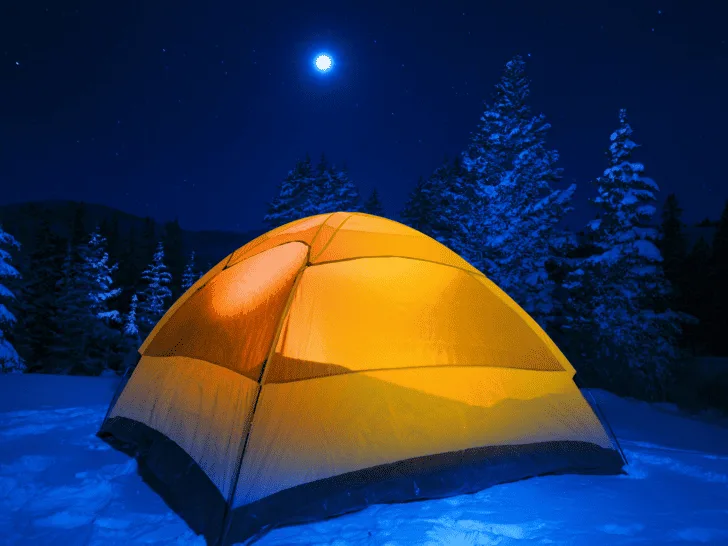Do you see winter as the time to hole up in your blanket fort on your couch watching Netflix? Break out of the boring seasonal mold. Cold weather camping lets you explore the great outdoors and offers oodles of adventures, even for beginners. Once you collect the necessary gear, you can pack up the family truckster and go on a mini vacation every weekend if you like.
You’ll acquire new skills, grow your bond and enjoy time away from endless screens, all while reaping some other pretty sweet intangible benefits. Here’s your beginner’s guide to cold weather camping.
Cold Weather Camping- Everything You Need to Know Before You Go
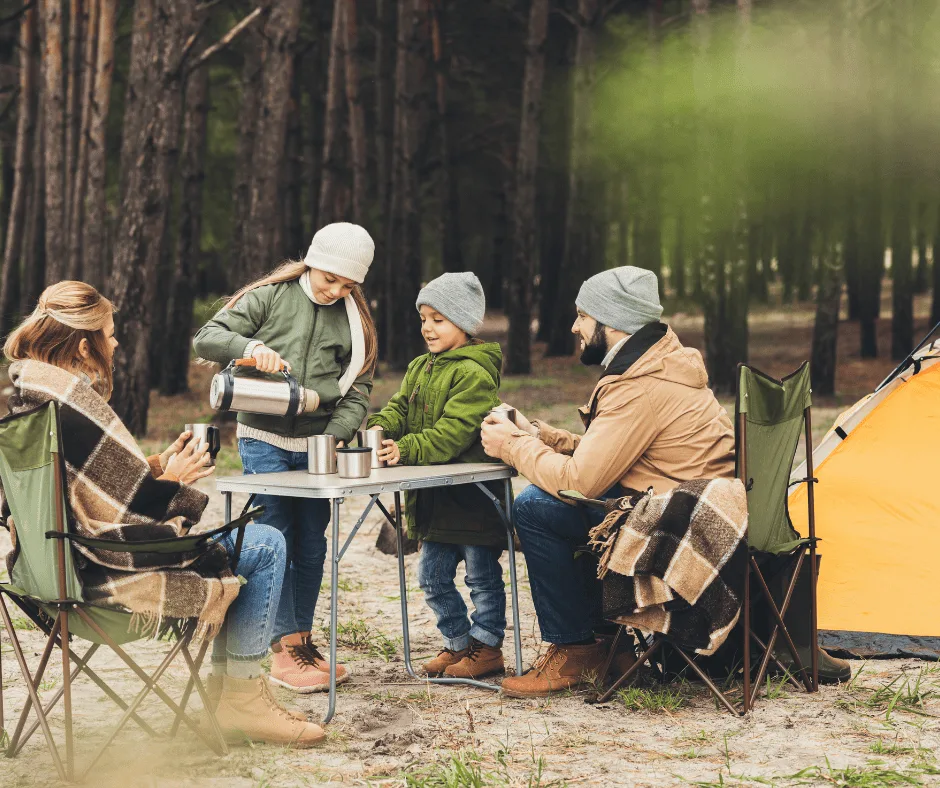
Many people shun the cold, thinking it’s impossible to get outdoors. However, it’s one of the best times to enjoy the silent serenity of the winter woods. Besides, humans haven’t always lived with indoor heat available at the push of a button. Unleash your primitive side and reap these fabulous perks.
You love your family, but come February, you’re tired of sharing such a confined space. You might even be psychologically recovering from pandemic shutdowns. Don’t let cabin fever strain your relationship with your spouse and kids — get out there and break boredom with a cold weather camping adventure.
Try visiting a national park during the cold season. Here is our guide to visiting Zion in winter.
Spending Time Outdoors Increases Your Immune Function
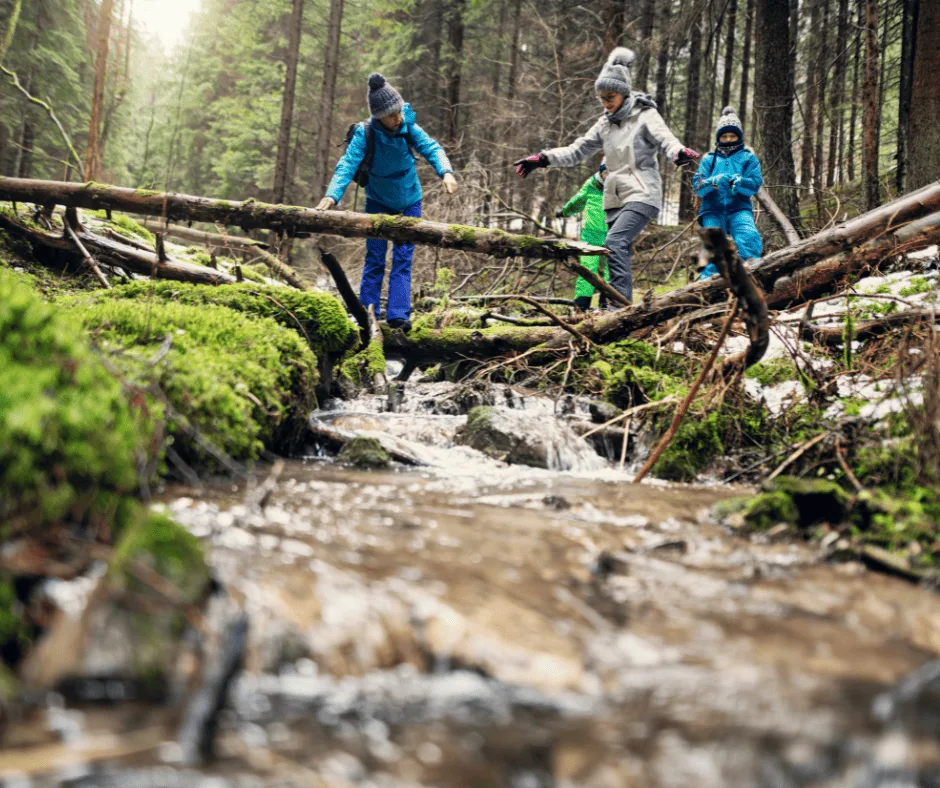
While temperatures alone won’t make you sick, cold weather dries your nasal passages, which are your body’s first line of defense against germs. That’s why you’re more likely to catch a bug in the winter. Bacteria and viruses proliferate in dry, indoor air and linger in HVAC systems, but there’s a countermeasure you can take.
Studies on forest bathers show the practice improves their immune function because plants emit chemicals against predators that bolster the human defense system when inhaled. Spending the weekend immersed in the fresh mountain air could arm you against that bug circulating the office.
Winter Camping Teaches You New Skills
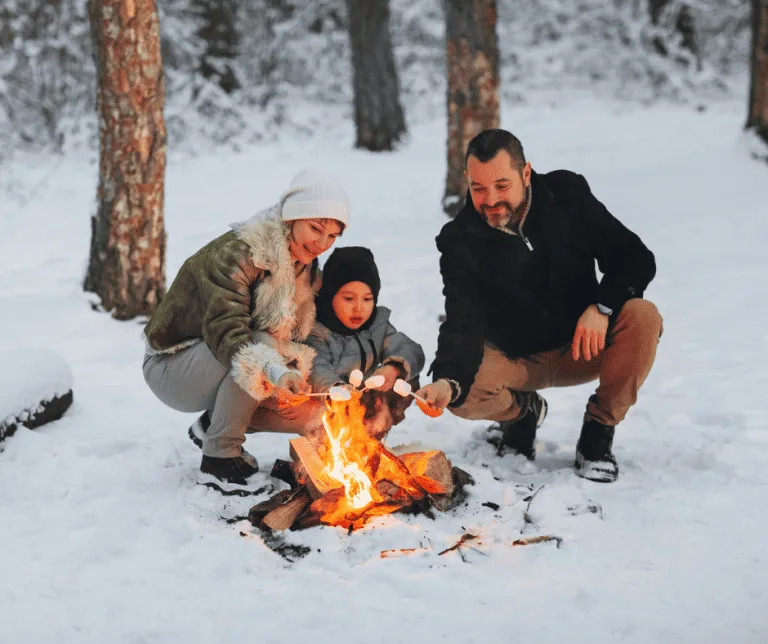
Starting a fire becomes a real test when it’s cold and snowy, but that’s not the only new skill you can acquire. For example, did you know snow can serve as insulation? Have you ever gone ice fishing or snowshoeing?
Cold Weather Camping Introduces You to a New World to Explore
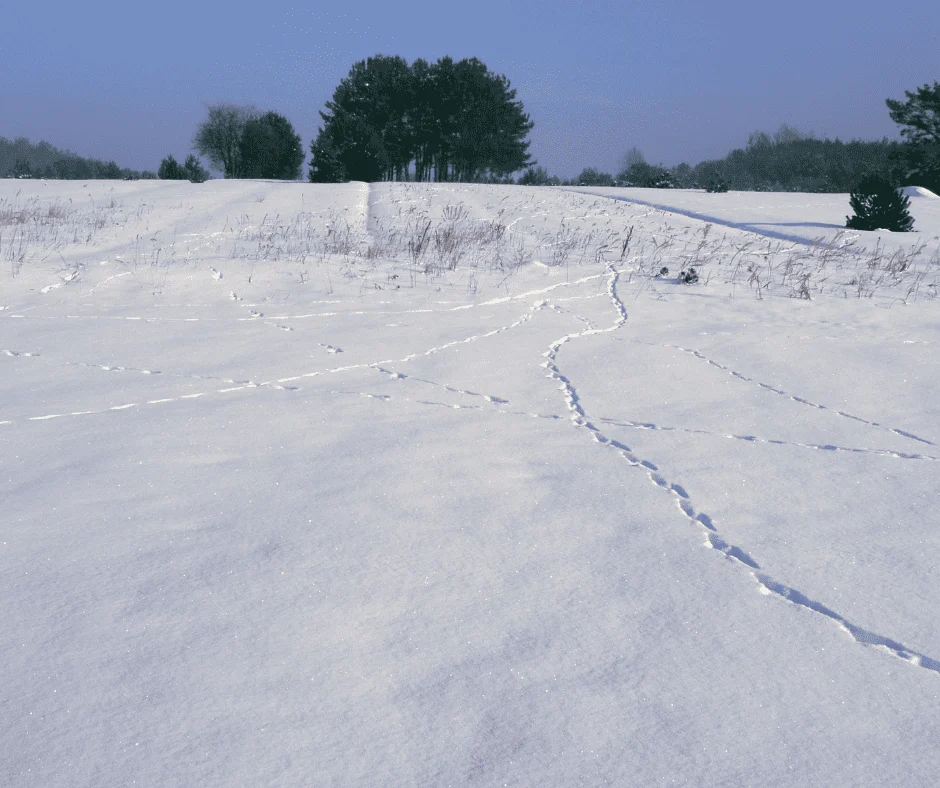
The winter landscape changes how your favorite familiar camping spots look. You might notice features you’d never spy if the view remained behind the foliage. Furthermore, you might find it easier to spy signs of fascinating animal life in the snow, like tracks and scat.
Should You Take Your Kids Cold Weather Camping?
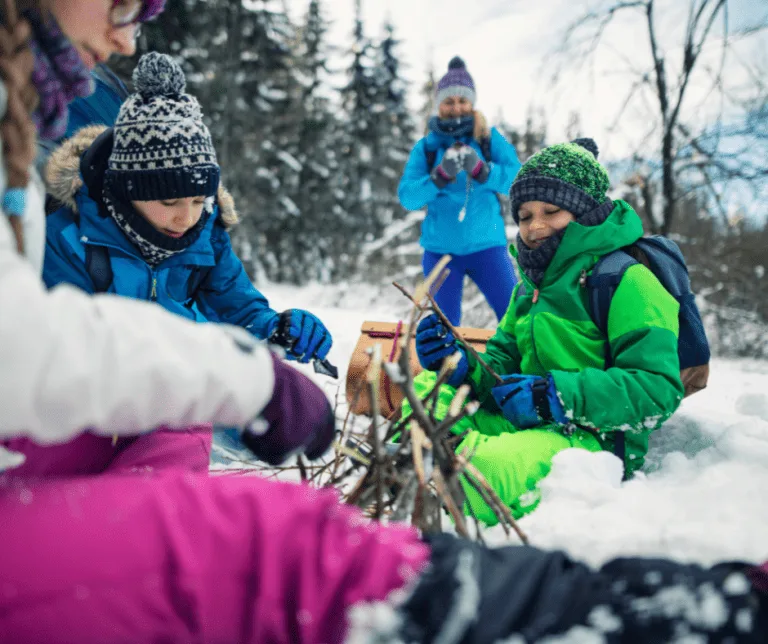
Cold weather camping is for family members of all ages, but you should take reasonable precautions with the little ones. Some infants start tent camping as young as six months, but temperatures that don’t bother you can affect their wee systems more severely — and they don’t have words to ask for help. Therefore, you might want to wait until their communication skills improve enough to tell you when they feel cold, but taking bundled-up toddlers is fine.
Older children might get into the adventure most of all. When you’re weary of hearing, “I’m bored,” you know it’s time to hit the forest.
What Supplies Do You Need for Camping in Cold Weather?
The gear you need for cold-weather camping varies, depending on your preferred style. Tent residents require a few more supplies, but RV dwellers still have plenty of prep work to do before hitting the road.
RVs and Cold Weather Camping
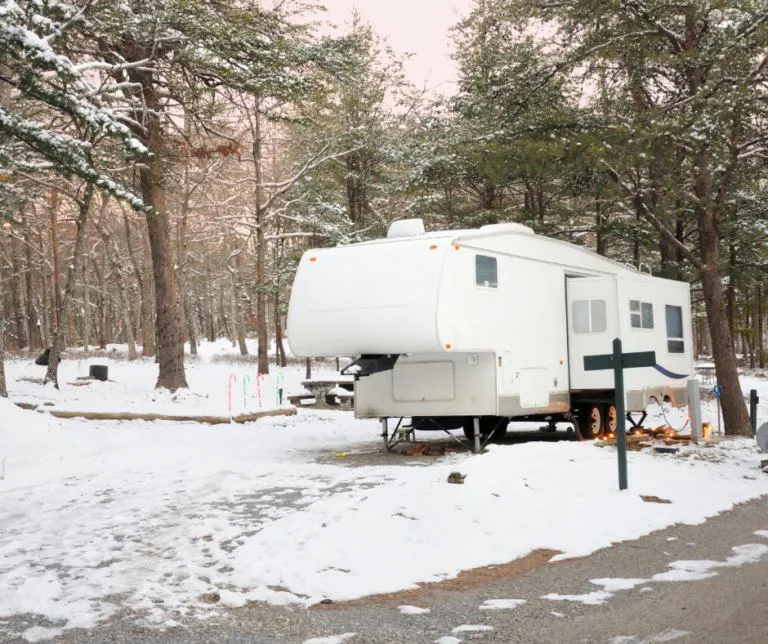
Those who don’t store their RV in a climate-controlled facility all winter could face problems with pipe breakage and freezing. RVs often lack the same insulation as homes, so use heat tape and after-market insulation to wrap pipes, use your internal water, and add antifreeze to the holding tank to keep it flowing.
While frozen pipes are your biggest concern, you should also take the following steps to winterize your RV before hitting the road to prevent getting stuck:
- Engine care: Inspect the batteries for corrosion and ensure you have the right antifreeze/water blend.
- Tire check: Ensure you have sufficient tread for handling snow and ice.
- Furnace maintenance: Check for obstructions, ensure the air return is clear and clean the furnace using compressed air.
- Supply check: You should have skirting to block cold drafts from under your trailer and extra blankets or Reflectix for added window insulation. A backup heater like a Mr. Heater Portable Buddy is also wise in case your rig unit malfunctions.
Tent Camping in Frigid Temperatures
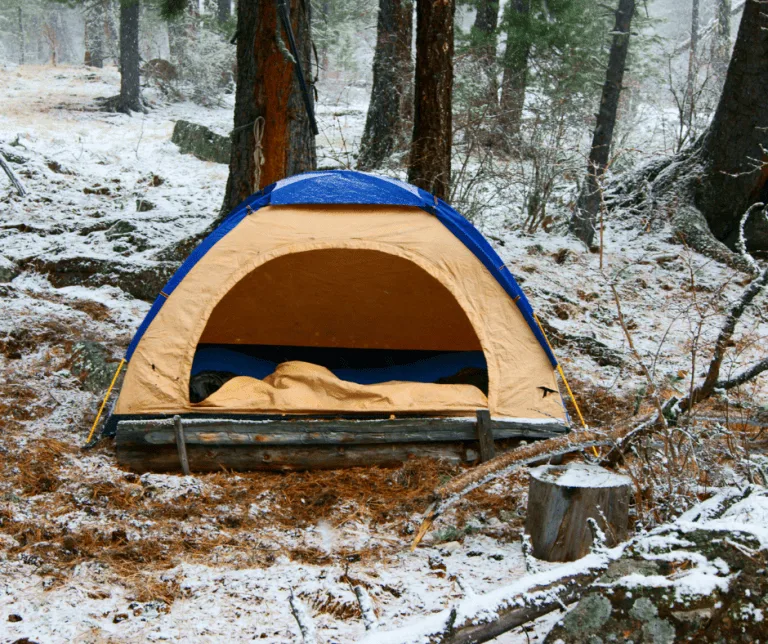
Tent camping needs the right supplies in winter. First, tamp down or clear away snow from your staking site with a shovel. A heavy-duty ground cloth provides a layer of insulation from the cold ground — place it beneath your tent before setting up stakes. You can add a second one inside if you like.
A well-insulated sleeping bag is a must for each family member. When selecting the appropriate model, look at the comfort rating and don’t skimp — this investment can last for years with proper care.
You’ll also want to bring lightweight sleep clothes like thin long johns, avoiding heavy pajamas. Your sleeping bag is designed to work with your body’s heat to insulate you, so adding layers in between ironically decreases effectiveness.
How Should You Dress for Cold Weather Camping?
How you dress for cold weather camping significantly impacts your enjoyment of your trip. Master two tricks — knowing how to layer and choosing the right accessories.
How to Layer Clothes for Cold Weather
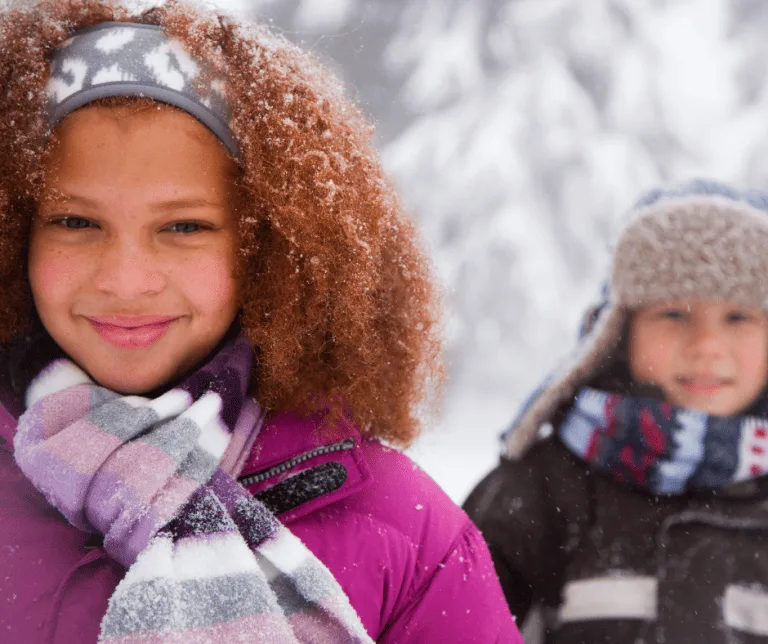
Here’s how to layer your clothing to keep coziest despite freezing temperatures:
- Base layers: Forget the cotton long johns — they get damp with sweat, making you shiver. Instead, select wicking fabrics like merino wool or a synthetic polyester or nylon blend.
- Middle layer: Here’s your insulation, so pile on the fleece and flannel. Some people feel more comfortable with an extra vest, leaving their arms and legs less covered. Play with various combinations.
- Outer layer: Your top layer is your shell, protecting you from wind, rain and snow, so seek waterproof coats and perhaps ski pants.
Other Clothing to Keep You Cozy in the Cold
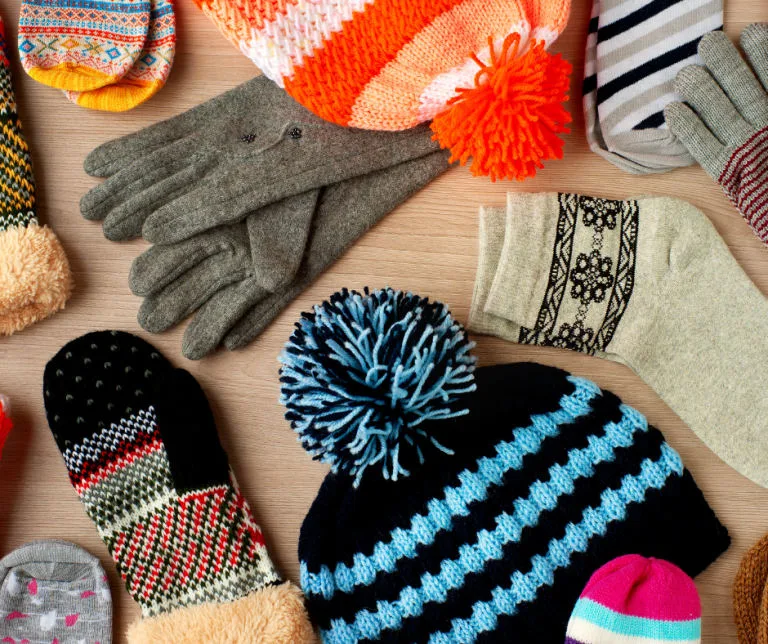
Here are some additional must-have items that can keep you cozy on your cold weather camping trip:
- Hat: While it’s a myth that you lose most of your body’s heat through your head, it is responsible for some of your total warmth, so keep it covered.
- Gloves: Gloves protect everyone from frostbite and are a godsend for folks with arthritis who get stiff joints in the cold.
- Boots: Grippy, waterproof footwear is essential for staying safe on snow and ice. They should provide sufficient ankle cover so you aren’t getting snow stuck in them.
- Socks: You can layer your socks like your other clothes. If your feet always freeze, try adding a fleece-lined pair atop a merino wool set.
How Do You Stay Warm and Safe While Cold Weather Camping?
The biggest barrier keeping more people from cold-weather camping is the freezing temperatures. Hypothermia can occur even before the thermometer dips below freezing and although humans today have better technology to prevent it, it remains a valid concern. Here’s what you should know to stay safe.
Preventing Frostbite and Freezing

Preventing frostbite and freezing comes down to your gear, especially your clothing. You might not have much besides the shirt and other clothes on your back if an item breaks, so it’s critical to layer, layer, layer. You can always shed the top fabrics when you get too warm.
Additionally, the following tools can help in keeping warm and preventing freezing:
- Hand warmers: You can tuck these little sacks close to anywhere on your body.
- A backup heater: Portable propane heaters or a solar panel and generator where you can plug in an electric model are options.
- Hot water bottles: While you need a way to heat them, you can place them in your sleeping bag with you for warmth. You can do the same with hand warmers.
Let People Know Where You’re Going
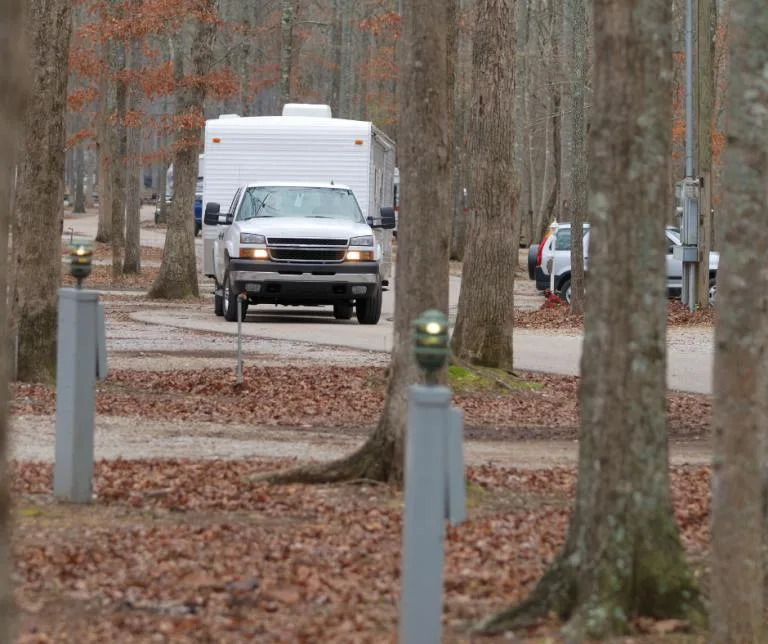
The best way to assuage your cold weather camping fears is to stick to a developed campsite. Locations such as KOAs have facilities where you can warm up and call for help if necessary. Regardless of whether you go to a public site or boondock, always let someone back home know where you’re going and when you intend to return.
If heading off the grid, it’s helpful to establish regular check-in times — a simple “Hey, we’re doing great” text works. That way, you can rest assured that someone will call for help if they don’t hear from you.
Fire Safety and Winter Camping
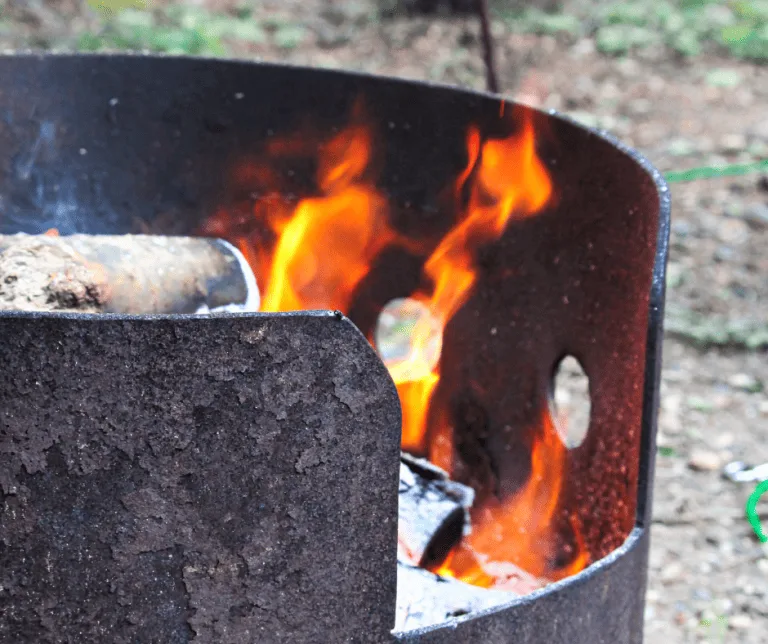
One of the best parts of winter camping is snuggling by the fire with a cup of hot cocoa. However, you must heed proper safety rules to avoid starting a forest fire and endangering your life and countless others while destroying habitats. Here are the safety rules you should follow:
- Follow the campsite rules: These may vary by season, even daily in some western states with high fire risk.
- Use a pit: Avoid starting fires on bare ground. Invest in a special fire pit for the purpose. Some established boondock sites feature prebuilt rock pits, so take advantage.
- Keep water and an extinguisher handy: You should always have plenty of water to douse your fire. It’s also wise to keep an extinguisher nearby in case flames grow out of control.
- Stay away from anything flammable: Your fire pit should be at least 15’ away from trees, shrubbery, and your RV or tent.
- Mind the wind: Skip the fire if conditions are blustery.
- Never leave a fire unattended: Even for a few minutes.
- Douse it: Ensure you fully extinguish your blaze by dousing it with water and shoveling through the ashes to ensure no hot embers remain.
6 of the Best Cold Weather Camping Locations
A great cold-weather campsite should be somewhere that captures the season’s spirit without getting too uncomfortably cold. Other locations offer a quick escape to warmer climes if you find your runny nose unbearable after a day or two.
1. Pennsylvania State Parks, PA
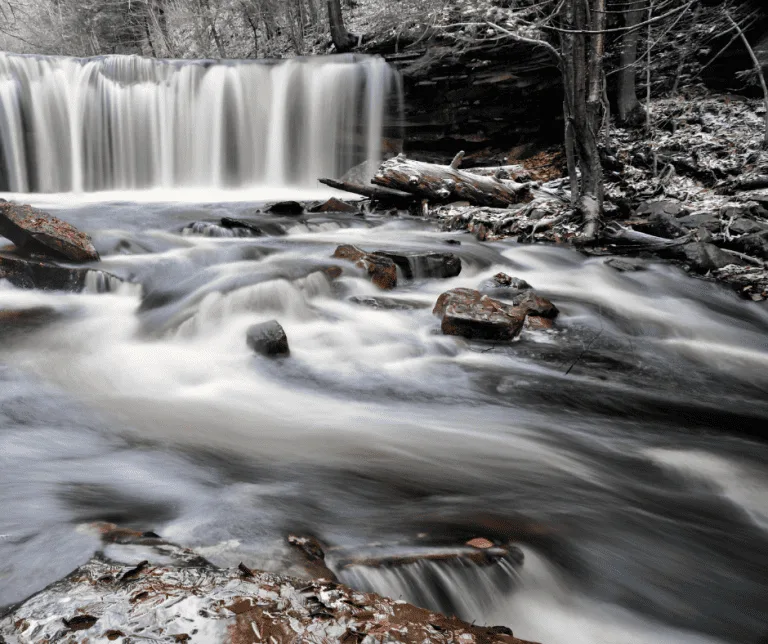
While many state and national parks close for the season, others stay open year-round. Pennsylvania features several such locations and while extreme temperatures occasionally occur, most winter weather is just cold enough for light snow and cuddling.
Ricketts Glen State Park is a must-see for hiking fanatics. Ricketts Glen features 26 miles of trails and 22 waterfalls which freeze in cold weather, creating a beautiful site. Keep in mind though that the most difficult trails are often closed in winter to all but experienced hikers.
Cook Forest State Park is a favorite for cross-country skiing with several dedicated trails and features 13 miles of the Clarion River, where hikers and campers often come to watch the local otter population.
Worlds End State Park is one of the best in the state for sightseeing due to its high vistas and spectacular views. While its general overnight areas are closed in the winter, it features year-round cabin rentals which are perfect for the cold weather.
2. Sedona, AZ
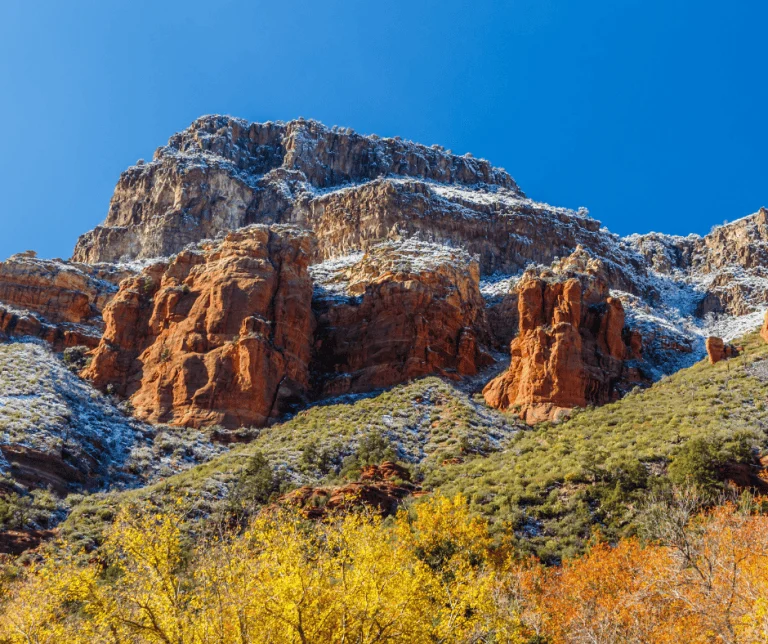
Sedona, AZ, is known for drawing mystics and nature lovers from around the globe. The stunning red rock formations mean most campsites fill up in no time, but you have a much better shot of snagging prime real estate along Oak Creek Canyon — Zane Grey’s old stomping grounds — in the winter.
If you’re lucky, you’ll catch a rare glimpse of snow against the red rocks. However, if you crave snow, snowboarding and fabulous sledding, head north to Flagstaff.
If the roads are clear, check out some of the other northern Arizona mountain towns, such as wonderful Williams — the gateway to the Grand Canyon and home of the Polar Express railway during the holidays. The park features over 300 miles of hiking trails, and you can take advantage of guided tours and horseback riding during the day.
3. Carlsbad, New Mexico
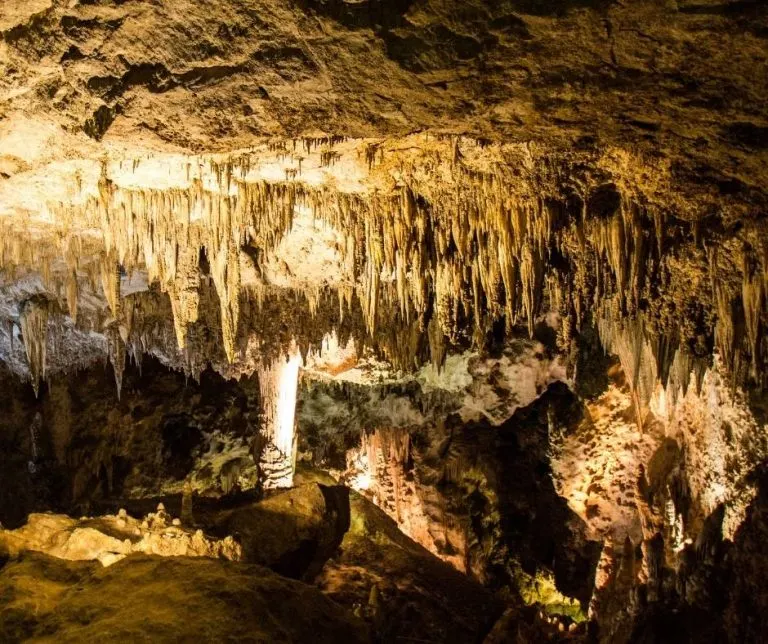
New Mexico gets somewhat cold and sees snow in the mountains, but it’s far more temperate than other destinations. Furthermore, the famous Carlsbad Caverns maintain an even temperature year-round. You’ll find a mix of paid sites and boondocking locations with breathtaking views of the night skies.
4. Harris Beach State Park, OR
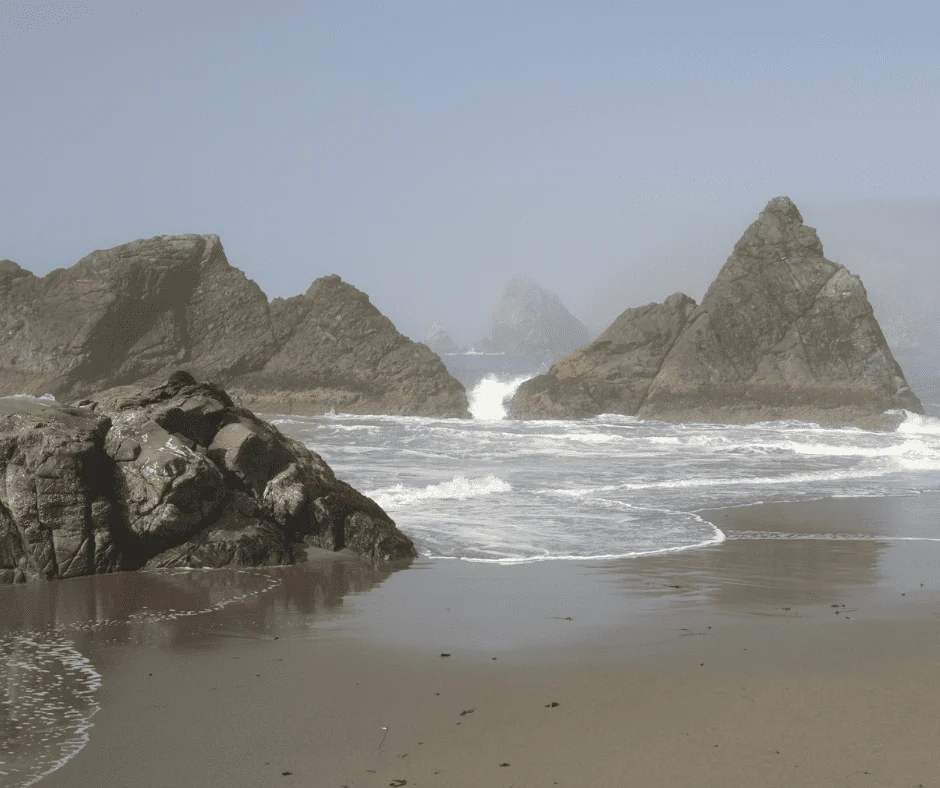
Some of the camping loops close at Harris Beach in the winter, but others remain open for the brave souls hearty enough to face the weather. Winter camping on the beach is a whole new experience.
While you won’t be tempted to dip your toes in the waves, you and the kiddos can collect seashells and give starfish a humane return to the sea. With a dump station and hot showers available, you can make this seasonal getaway more of a glamping excursion.
5. Joshua Tree National Park, CA
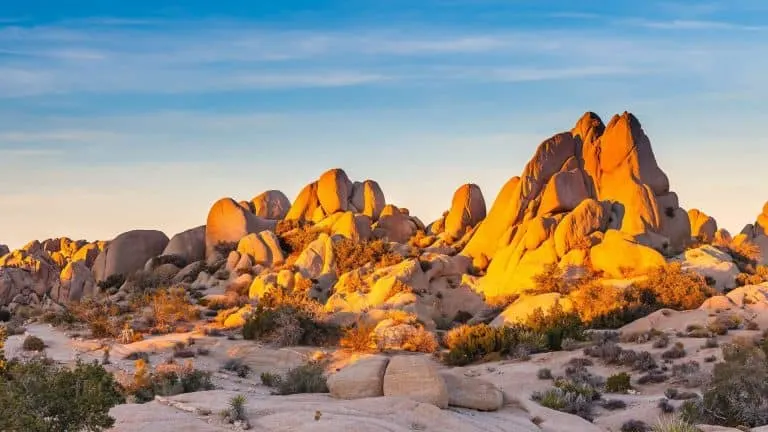
Joshua Tree is home to some of the most stunning southwest scenery and while desert nights are cold, temperatures rarely dip below zero. National Park campsites fill up quickly, so your best chance of getting your ideal reservation may come during the slow season.
Read or full guide to Joshua Tree National Park with kids.
6. Bear Lake State Park, UT
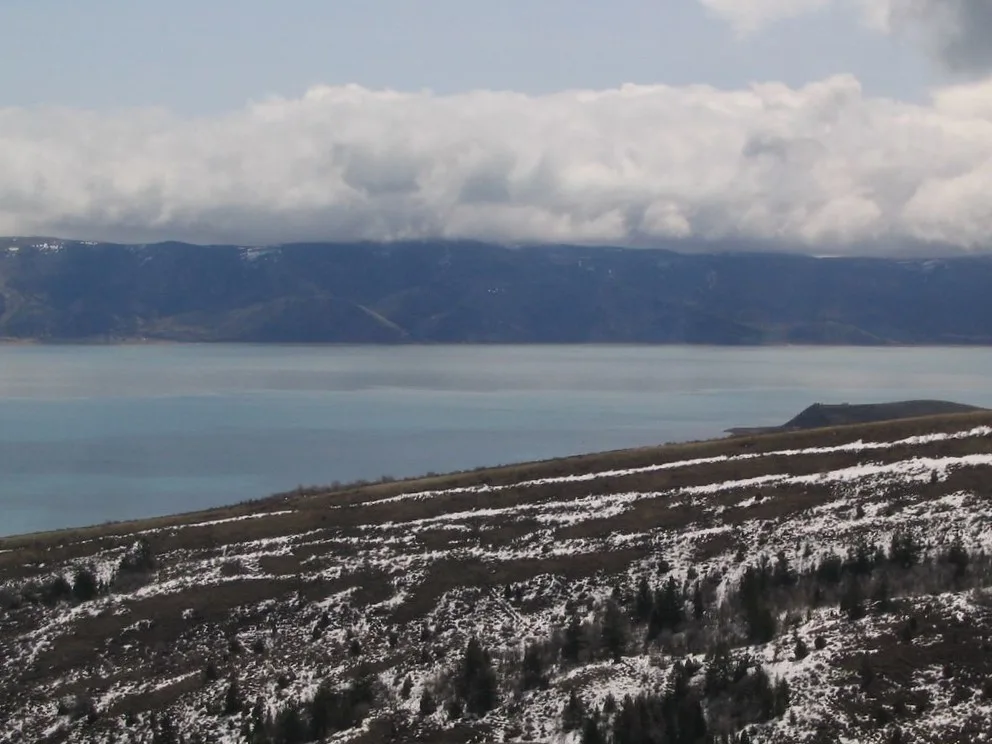
Utah may be the ultimate cold-weather camping destination. With five national parks and copious state parks, you’ll find plenty of spots open in winter. Go early and take in some spectacular fall foliage.
Return later in the season to one of the open locations. Bear Lake remains so year-round, offering fishing and boating for folks who love the water.
Check out our amazing Utah road trip itinerary.
Final Tips for Planning Your Cold-Weather Camping Trip
Here’s a handy checklist chock-full of final tips to help your cold-weather camping trip be a success:
- Have you inspected your vehicle to ensure it’s in good working condition? This rule includes your car if driving or your RV.
- Have you checked and double-checked that you have all your supplies?
- Have you dressed appropriately for winter conditions?
- Have you left your itinerary with someone back at home? Have you established check-in times if boondocking?
- Have you packed a first aid kit, any prescriptions you take, your contacts or glasses, or hearing aids?
- Have you made food plans?
- Do you have sufficient water — at least one gallon per person per day — or ample filtration options?
- Do you have several means to start a fire and the knowledge to do so?
Jack Shaw is a Senior Outdoors Writer for Modded Magazine. Driven by his passion for writing, Jack loves to traverse the wilderness, travel and explore the unknown. He has over six years of experience writing professionally and loves engaging in new projects. His works have been published in The Travel Magazine, EcoHotels, Duluth Pack and more.
- The Best Pumpkin Patches in Iowa - September 30, 2024
- The 8 Best Indiana Pumpkin Patches - September 30, 2024
- 16 Great Pumpkin Patches in Colorado - March 31, 2025

